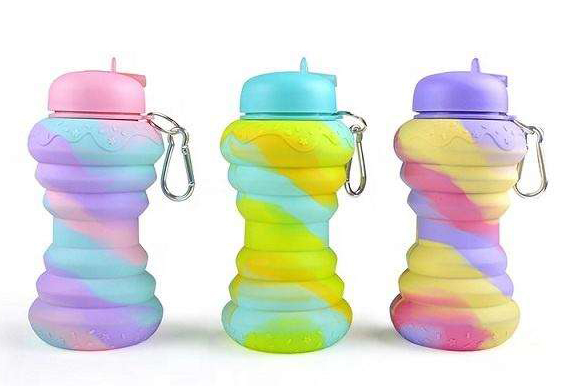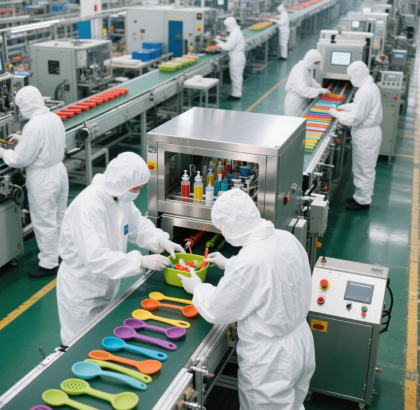Содержание
Пищевой силикон - это тип высококачественного силикона, изготовленного из диоксида кремния (SiO2) и воды. Его химический состав, в основном SiO2-nH2O, составляет более 98% его структуры. Этот материал абсолютно нетоксичен, не имеет запаха и химически инертен при нормальных условиях. Он не вступает в реакцию с большинством кислот, оснований или солей, за исключением сильных щелочей и плавиковой кислоты.
![]()
![]()
Уникальной особенностью пищевого силикона является его пористая природа, с порами размером около 8-10 нанометров. Такая структура придает ему огромную площадь поверхности, обычно составляющую от 300 до 500 квадратных метров на грамм. Благодаря этим свойствам он обладает высокой абсорбционной способностью и может впитывать до 100% своего веса в воде в условиях повышенной влажности.
Свойства пищевого силикона:
Безопасность и прозрачность
Пищевой силикон - это экологически чистый материал, который абсолютно безопасен для использования с едой и напитками. Он не содержит токсинов, таких как BPA, фталаты и другие вредные химические вещества. Наши силиконовые изделия, включая бутылки для воды и контейнеры для еды, разработаны с учетом принципа прозрачности, что позволяет видеть, что находится внутри, без ущерба для безопасности.
Гибкость и долговечность
Наши силиконовые изделия известны своей исключительной гибкостью и упругостью. Их можно скручивать и сгибать, не ломая и не теряя формы. Будь то силиконовая бутылка для воды или детский прорезыватель для зубов, вы можете положиться на наши изделия, которые выдержат ежедневный износ.
Температурная стойкость
Пищевой силикон выдерживает экстремальные температуры - от морозильной камеры до духовки. Наши силиконовые бутылки для воды и контейнеры для еды разработаны таким образом, чтобы сохранять свою целостность даже при воздействии кипящей воды или мороза.
Высокая прочность на разрыв
Обладая превосходной прочностью на разрыв, наши силиконовые изделия устойчивы к повреждениям и служат дольше, чем многие другие альтернативы. Такая долговечность гарантирует, что ваши инвестиции в нашу продукцию окупятся со временем.
Стабильность во времени
В отличие от некоторых пластмасс, пищевой силикон не желтеет, не застывает и не образует белых следов. Он сохраняет стабильный цвет и внешний вид даже после длительного воздействия воды, что делает его идеальным для длительного использования.
Области применения пищевого силикона:
Аксессуары для выпечки
Наши силиконовые коврики и формы для выпечки идеально подходят для приготовления печенья, тортов и пирожных. Они равномерно распределяют тепло и предотвращают пригорание, облегчая уборку.
Кухонные инструменты
Гибкие и прочные силиконовые шпатели, виски и ложки обеспечивают удобный захват и бережно относятся к поверхности посуды.
Детские товары
Мы гордимся нашей линейкой детских товаров, таких как пустышки, ложки для кормления и игрушки-прорезыватели. Каждый предмет тщательно изготовлен из пищевого силикона, чтобы обеспечить безопасность и комфорт младенцев.
Удобная для путешествий посуда
Для тех, кто любит путешествовать налегке, наши Складные силиконовые бутылки для воды и кастрюли обеспечивают удобство без ущерба для качества. Они легкие, компактные и легко моются.


Сертификация и тестирование:
- Одобрено Управлением по контролю за продуктами и лекарствами США: Убедитесь, что продукт сертифицирован Управлением по санитарному надзору за качеством пищевых продуктов и медикаментов США (FDA) или другими соответствующими регулирующими органами.
- Чтение этикеток: Убедитесь, что продукт маркирован как "пищевой" и не содержит вредных химикатов.
В заключение следует отметить, что пищевой силикон 100% - это безопасный и универсальный материал для использования на кухне. Его свойства и преимущества делают его отличным выбором для тех, кто ищет долговечную, легко очищаемую и экологически безопасную кухонную утварь. При выборе силиконовых изделий всегда проверяйте наличие сертификатов и этикеток, чтобы убедиться в их высоком качестве.


